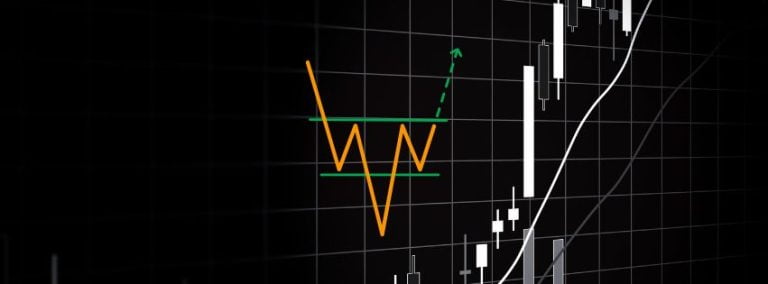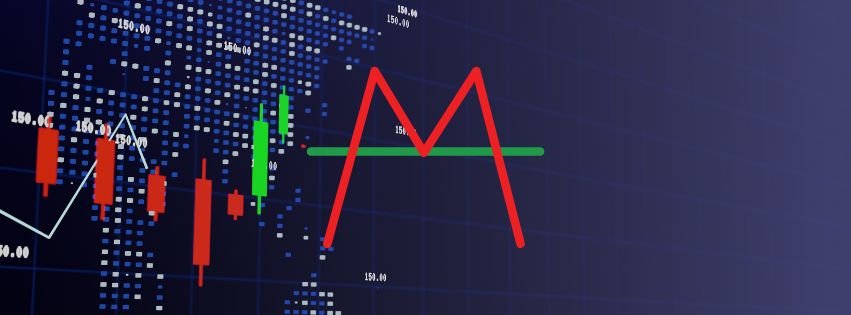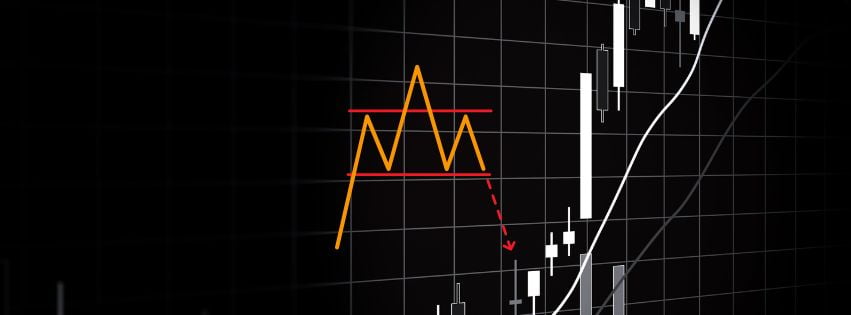Inverse Head and Shoulders, also known as Inverted Head and Shoulders and Head and Shoulder Bottom, is a well-known bullish reversal chart pattern that indicates a potential end to a downtrend. In this article, we will explore the structure of this pattern and provide tips on setting targets once it is identified.
Inverse Head and Shoulder Structure
The Inverse Head and Shoulders, a bullish reversal pattern, typically appears in a prolonged downtrend, signaling a potential reversal in the market direction. As its name suggests, it is the mirror image of the Head and Shoulders pattern, which is bearish.
There are four essential components in the bullish head and shoulder pattern, as shown below. The head is the lowest point, while the neckline acts as the resistance line.
During the formation of the left shoulder, the market experiences a brief rebound following a prolonged decline. However, this upward movement is short-lived, and the market resumes its downtrend. After reaching a new low following the rebound, the market rallies once more but encounters resistance at the previous rebound’s high price level.
The price then declines again, but begins a third rebound, stabilizing above the low of the previous rebound. During this third rebound, the market breaks above the high price level of the previous two rebounds, marking the beginning of a new uptrend.
Inverted Head and Shoulder Neckline
Compared to another bullish reversal pattern, the Double Bottom, the neckline of the Inverted Head and Shoulders is easier to spot. To identify the neckline, simply connect the high price points of the left shoulder and the head; the line formed is the neckline.
In many cases, shortly after the breakout, the market may fall back to retest the neckline before initiating a sustained rise. This retest of the neckline can serve as an ideal entry point for a long position, assuming the neckline provides support.
The neckline plays a crucial role in the bullish head and shoulders pattern, as the breakout of the neckline is considered the confirmation of the pattern.
Confirmation & Entry – Neckline Breakout
The pattern is only confirmed when the price breaks above the neckline, which acts as a resistance level. This breakout also provides the first entry point for the pattern.
Second Entry Point – Neckline Retest
The retest of the neckline provides traders with a second entry signal, and further confirms the validity of the inverted head and shoulders pattern.
Inverted Head and Shoulders Target
Now that we know how to find the entry price, the next question is how to set the target for the inverse head and shoulders pattern. The answer is quite simple: it can be calculated using the neckline price and the lowest price of the pattern. Here is the formula:
Inverted Head and Shoulders Pattern Target = Neckline Price + (Neckline Price – Lowest Price)
In other words, the potential rise distance is at least equal to the height of the pattern.
For example, let’s assume there is an inverted head and shoulders pattern on the daily chart of WTI crude oil. The lowest price in the pattern is $60, and the neckline price is $75.
After the neckline breakout, the target price would be calculated as: 75+(75−60)=90.
Bullish Head and Shoulder Example
In the Hang Seng Index daily chart below, an inverse head and shoulders pattern is evident from November 29, 2023, to April 25, 2024. We will use this example to demonstrate how to trade the pattern in three steps.
Step one: How to identify the partern
When the index reached the red spot A, experienced traders could already identify the formation of a reverse head & shoulders. Some aggressive traders might have entered long positions between spots A and B, unfortunately, all these positions were stopped out.
Step two: How to locate the neckline
The horizontal black dashed line represents the neckline of this pattern, situated at 17,200. It becomes apparent when the index moves to point A, as it coincides with the resistance level derived from the previous low.
Step three: Find entry and target price
Many traders anticipated a neckline breakout at point B, however, the price faced resistance and dipped below the low of point A. This underscores an important principle: waiting for confirmed breakout signals can enhance safety.
Finally, the breakout occurred at point D. Some traders waited for the price to close above 17,200 before entering the long position, entry around 17,500. With the lowest price at 14,800 and the neckline at 17,200, the target was calculated as [17,200 + (17,200 – 14,800)] = 19,600. The index eventually reached this target.
Inverse Head and Shoulders Variants
In reality, the inverted head and shoulders pattern often appears in various forms. Sometimes, we may see the pattern formed in a slightly deformed pattern, this happens on the Head & Shoulders pattern as well, some of the patterns include:
1). Complex Bullish Head & Shoulders
Inverted Head and Shoulders patterns, similar to triple bottoms (a variant of double bottoms), can include multiple left or right shoulders. This variation is referred to as a complex bullish Head & Shoulders pattern.
2). Sloping Neckline
The neckline of the bullish Head & Shoulders pattern is essentially a resistance line, which may not necessarily be vertical. It can slope upward or downward, as shown in the example below.
Failed Inverse Head and Shoulders
Although traders can often identify the bottom of a downward market using the inverse Head and Shoulders pattern, a failed pattern can also occur. The pattern doesn’t guarantee a reversal but rather signals a potential trading opportunity.
Even after a neckline breakout, the pattern can fail. In the 30-minute chart of the Australian ASX200 index below, a perfect bullish Head and Shoulders pattern, including a neckline breakout, ultimately failed as the price fell below the neckline shortly after the breakout.
Despite the potential for failure, the inverted head and shoulders pattern remains a highly valuable chart pattern that traders should capitalize on whenever it is identified. By adhering to the guidelines explained in this article and maintaining strict risk management, the overall profit from trading this pattern will definitely outweigh the stop-losses.






